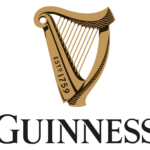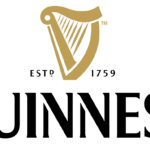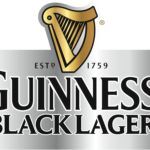evolution history and meaning
- Family owned through the better part of the twentieth century, Guinness has been part of the Diageo Group since 1997 and is now brewed in 49 countries worldwide and sold in over 150.
- The Golden Harp is not just a picture or simple emblem, but a symbol, synonymous with the brand and representing its philosophy and legacy.
- The very first logo for Guinness was created in 1862 and featured a monochrome badge with a double oval outline where the ornate wordmark in two different styles was placed.
- 1955 — 1968 In 1955 the Guinness logo was simplified to just a harp, drawn very detailed in monochrome, and placed on a plain white background without any lettering and framing.
- 1968 — 1997 In 1968 the Harp gets modern contours and a renewed color palette, now its thick and smooth lines are executed in dark l and placed on a gradient blue background, resembling sky and evoking a sense of lightness and freedom.
- 1997 — 2005 The wordmark was added to the logo in 1997.
- 2005 — Today The color palette was elevated in 2005.
- The golden harp was placed on a black background, above the white inscription, which contours were modified and cleaned.
- 2016 — Today The redesign of 2016 brought a three-dimensional emblem to the Guinness visual identity, making the surface gradient and its texture — metallic.
- The Emblem The harp, the national symbol of Ireland, was adopted by Benjamin Lee Guinness for his family’s beer in 1862.
- He based the logo on a specific harp—Brian Boru’s Harp, which is the oldest surviving Gaelic harp.
- However, there is a difference between the Irish government harp and the Guinness harp.
- The current harp was introduced in 2005 by Design Bridge.
- Video













Leave a Review